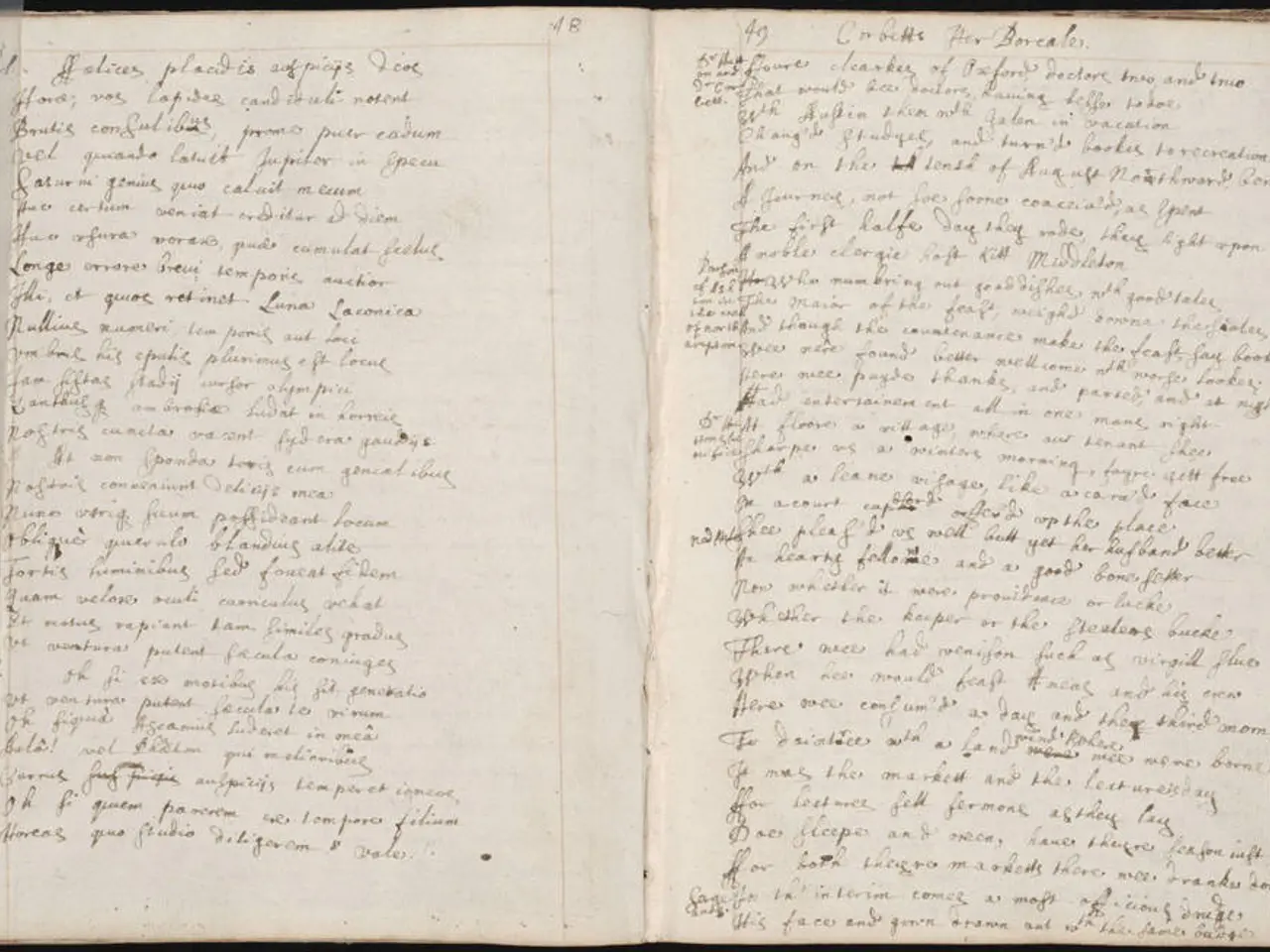Guide on Crafting a Reflection Essay: Structure and Illustrations
In the realm of academic writing, reflection papers stand out as a unique and valuable means of expressing personal insights and academic rigor. These papers allow students and researchers to delve into significant experiences, challenges, or personal growth moments, and connect them with broader academic context.
To write an effective reflection paper, it is essential to follow clear guidelines, understand different types, and apply practical tips for strong, insightful writing.
**Guidelines for Writing an Effective Reflection Paper**
1. Choose a significant experience or topic that allows for deep introspection, such as a specific event, challenge, or personal growth moment.
2. Thoroughly understand the topic, including any related theories or literature, to connect personal insights with broader academic context.
3. Use a reflective model or framework to structure the paper logically and coherently.
4. Be honest and critical in your reflection—express your true feelings and thoughts while analyzing the experience critically, not just descriptively.
5. Adopt a formal academic tone, balancing personal experience with general facts and avoiding overly conversational language.
6. Organize the paper with a classical structure: Introduction, Body paragraphs, and Conclusion.
7. Link your reflections to relevant theories, literature, or course content to demonstrate critical thinking and academic rigor.
8. Proofread and edit carefully to ensure clarity, grammar, and flow.
**Types of Reflection Papers**
- Personal Reflection Papers: Focus on a personal experience or journey, analysing impact and lessons learned. - Academic Reflection Papers: Link personal insights with academic theories or course material, emphasising critical evaluation. - Book or Literature Reflection Papers: Reflect on how a book or literary work affected your thoughts, values, or understanding, supported by examples from the text and personal anecdotes. - Research Reflection Papers: Researchers reflect on their research process, methodology, challenges, and learnings.
**Tips for Students and Researchers**
- Select a meaningful topic or experience that has personal relevance and academic value. - Ask probing questions like "How did this experience affect me? What did I learn? How has my perspective shifted?". - Create a detailed outline to organise your ideas logically, often chronologically, mapping introduction, body reflections, and conclusion. - Write a compelling introduction with a hook (e.g., quote, question, anecdote) that sets the tone and includes a clear thesis statement reflecting your main insight. - Support your reflections with specific examples, anecdotes, or references to literature or theory. - Avoid overly emotional writing; maintain balance between personal voice and academic formality. - Be concise and focused, avoiding overwhelming the paper with all your experiences; select relevant material that fits the topic. - Use honesty and depth, showing vulnerability and critical thinking, which enhances the quality and credibility of the reflection. - Revise and edit to ensure your paper flows logically, is free from errors, and clearly communicates your reflections.
By combining personal insight with academic rigor, using a clear structure and thoughtful analysis, you can write a reflection paper that is both engaging and scholarly. The AI writing toolkit, designed to help students and researchers write better and faster, offers features like accurate academic translations, rewriting support, grammar checks, vocabulary suggestions, and generative AI assistance.
With numerous online tools and platforms like the AI-driven one, students can better understand the reflective writing process and automate tedious tasks. The AI writing toolkit leverages 22+ years of STM experience and insights from millions of research articles. It offers in-depth academic writing, language editing, and submission readiness support.
The toolkit is available for sign-up and free use, with premium features including consistency, plagiarism, and 30+ submission readiness checks. A well-structured reflection paper includes an introduction, body paragraphs, and a conclusion. Body paragraphs should expand on the thesis statement and include the researcher's own informed opinions, beliefs, and ideas.
Reflection papers are used by students or researchers to communicate their responses to textual materials, experiences, or events. They help researchers understand how to process and interpret personal experiences and knowledge, and can enhance critical thinking skills.
With these guidelines, tips, and the aid of tools like the AI writing toolkit, you are well-equipped to craft insightful and effective reflection papers.
- To enhance the clarity, grammar, and flow of a reflection paper, it is crucial to proofread and edit diligently, utilizing features like language editing and grammar checks offered by tools such as the AI writing toolkit.
- In addition to providing writing support, the AI writing toolkit offers academic translation services, enabling researchers to bridge linguistic barriers and expand the accessibility of their reflection papers to a broader academic audience.
- For a comprehensive and well-rounded learning experience, students and researchers can engage in education-and-self-development activities such as attending workshops, seeking mentorship, and incorporating reflective writing into their daily routine, fostering personal growth and critical thinking skills.




